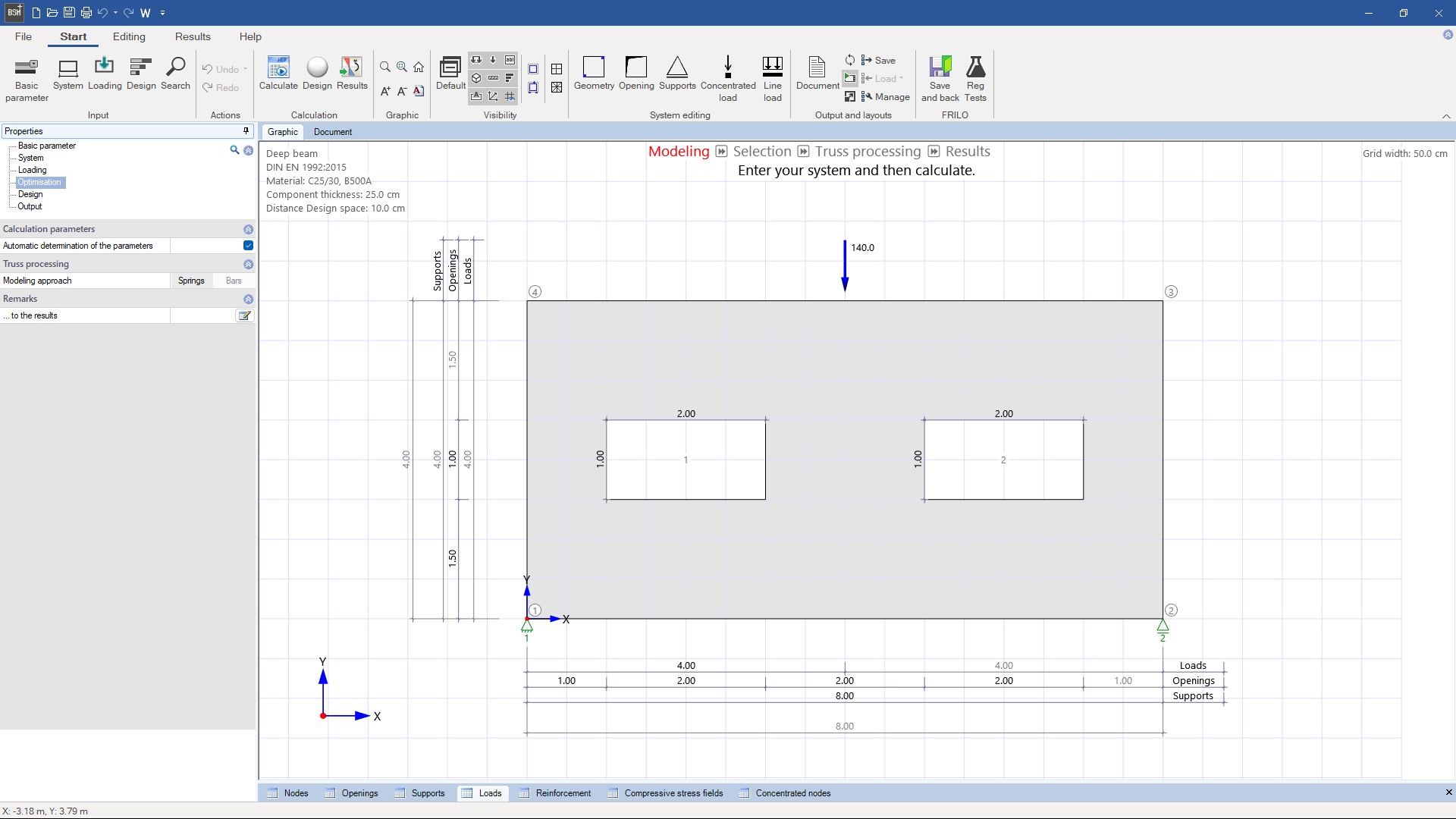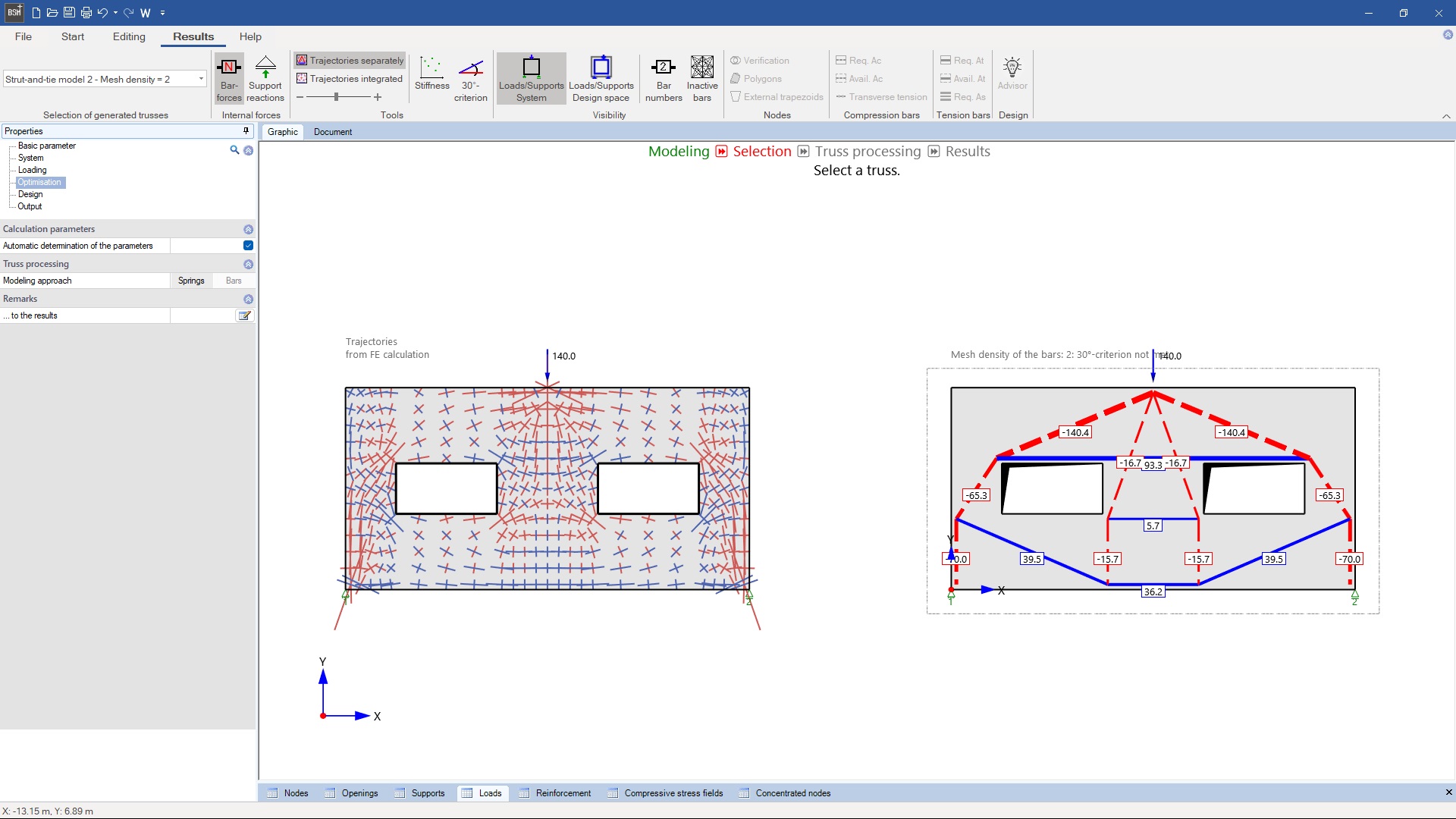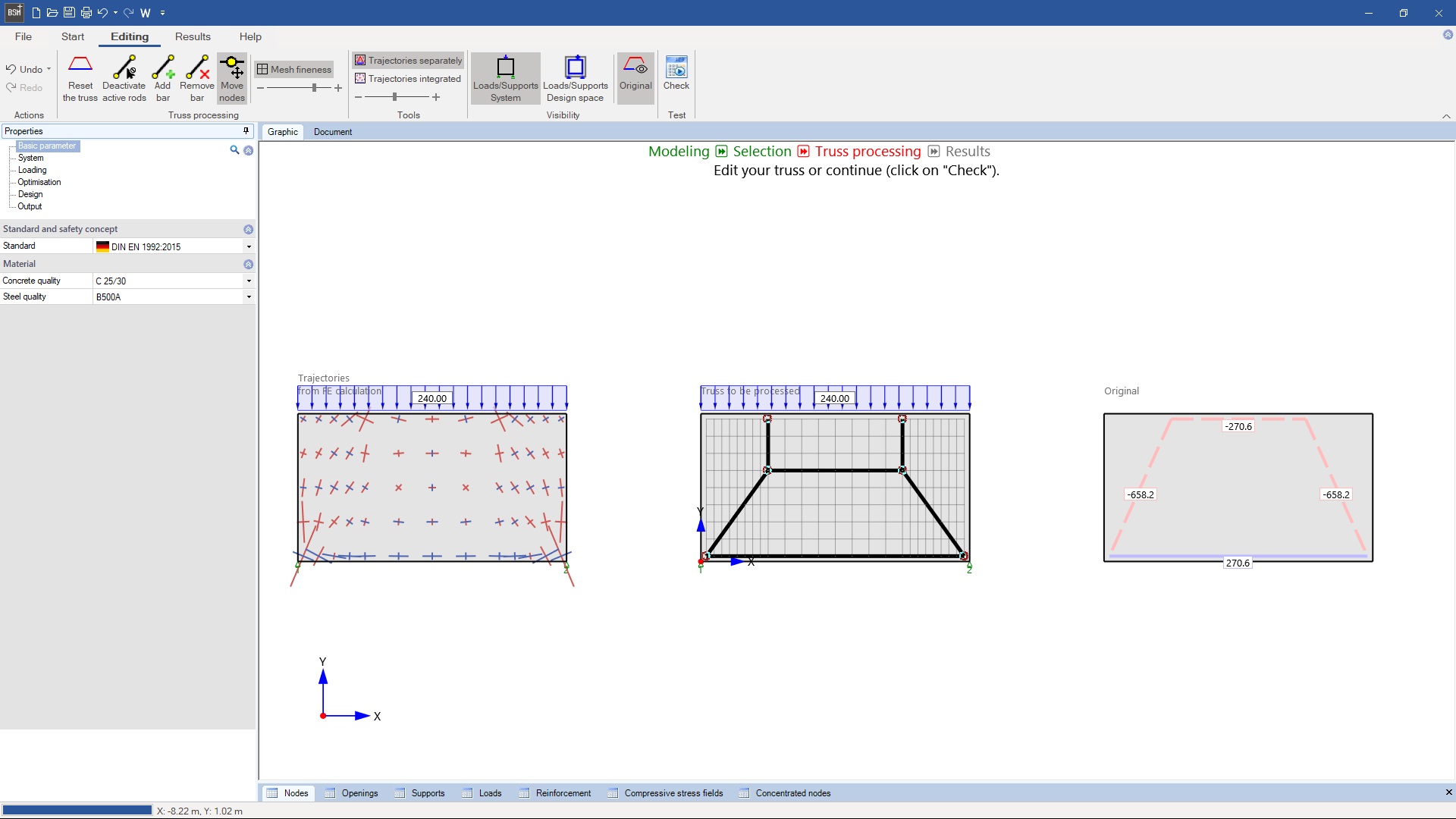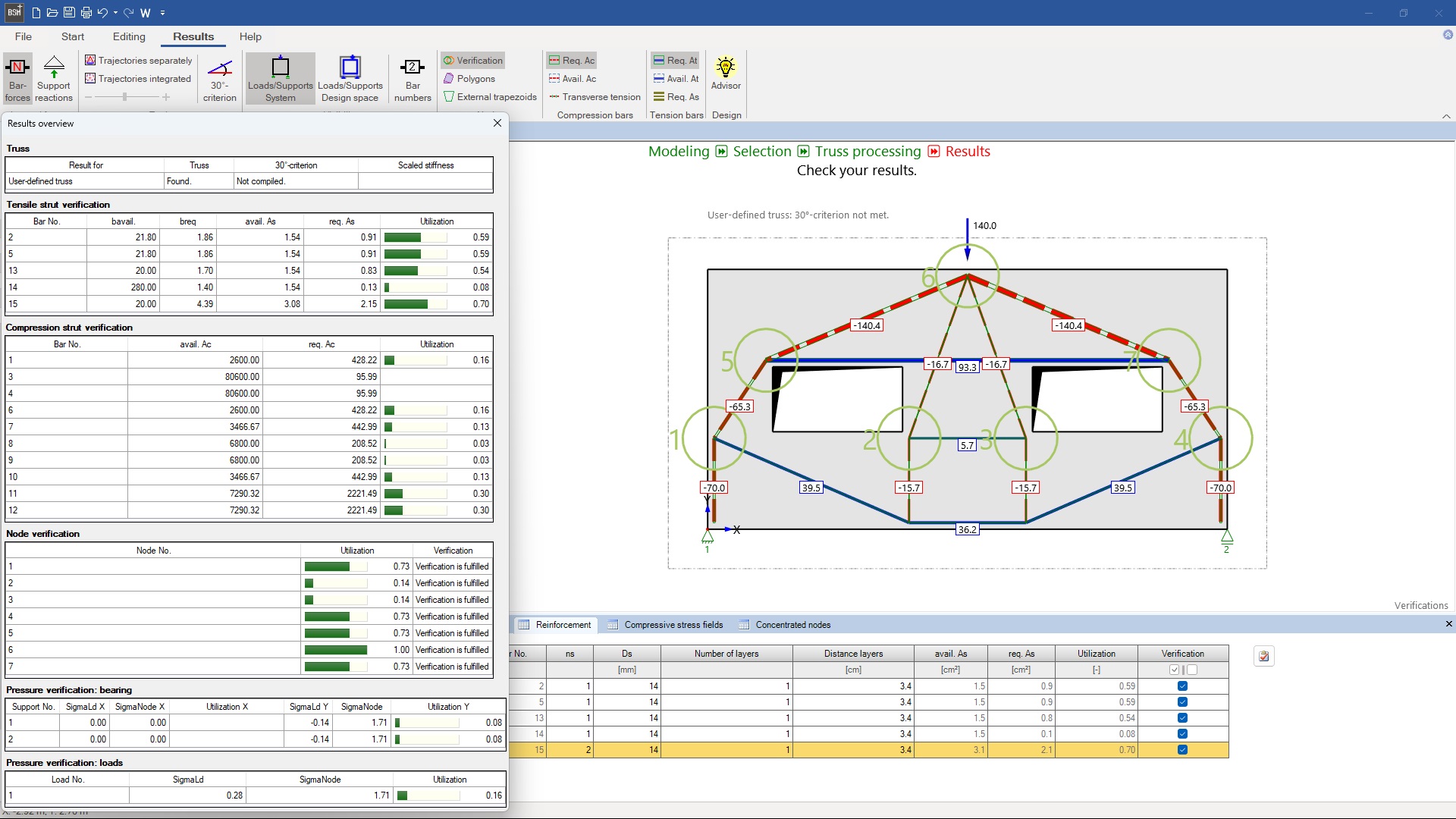
Strut-and-Tie Model Reinforced Concrete
The “Strut-and-Tie Model Reinforced Concrete” program generates stiffness-optimized strut-and-tie models of a given component geometry and load for the design of reinforced concrete components. Right-angled structures with any number of re-entrant corners as well as recesses can be analyzed. If necessary, the optimized model can be customized. The required reinforced concrete verifications for strut-and-tie models are performed afterwards.
Only available in FRILO Professional und FRILO Ultimate
Core capabilities
System
- Entry of right-angled structures
- Thin plates (walls) with openings
- Most variable concentrated supports with rigid or free supporting conditions
Loading
- Vertical and horizontal loads from concentrated loads
- Internal conversion of line loads and trapezoidal loads into resulting concentrated loads
Material
- Concrete of the strength classes C12/15 to C100/115
- Concrete and reinforcing steel with user defined parameters
- Reinforcing steel of the steel grades B500A, B500B and BSt 420 S(A) in combination with the German NA (corresponding qualities for all other available NAs)
Output profiles
- Short
- Detailed
- Custom
File Formats
- Word
- Printer
Import options
FRILO XML
Export options
- Word
- FRILO XML
Reinforced Concrete
- DIN EN 1992
- ÖNORM EN 1992
- BS EN 1992
- NEN EN 1992
- NBN EN 1992
- PN EN 1992
- CSN EN 1992
- NF EN 1992
Basis of analysis
The basis of the analysis is a topology optimisation algorithm based on the so-called ground structure method. This method consists in finding a maximally stiff frame with as few members as possible.
Verification and quality criteria
Verification of the following quality criteria in the determination process of the strut-and-tie model:
- Crossing compression struts – in this case the strut-and-tie model becomes invalid
- Verification of acute angles between compression and tension struts according to the strut-and-tie modelling theory by Schlaich/Schäfer
Editing
- Add/remove bars
- Move nodes
- Adjust mesh fineness for additional nodes
Design
- Verification of compression struts
- Verification of tension struts with reinforcement selection
- Verification of compression at load bearing supports and under load plates
- Transverse tension verification
- Verification of nodes (general procedure according to Prof. Mike Schlaich’s dissertation)
Support resources
News
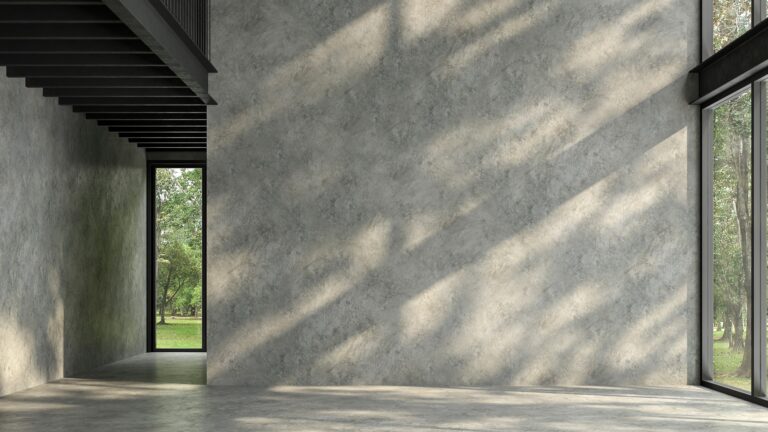
FRILO presents a new program for the calculation of strut-and-tie models in reinforced concrete construction
FRILO Software GmbH has successfully delivered the software version 2023-2.
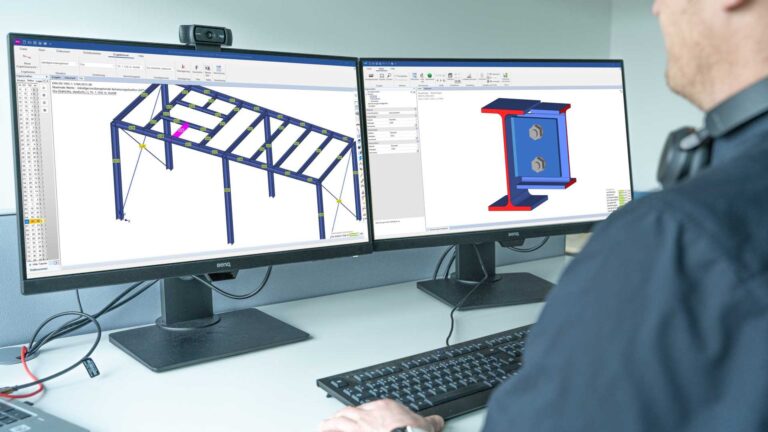
FRILO launches version 2024-2 with powerful updates for structural analysis and design
Highlights include the optimised design of Schöck Isokörbe®, the advanced integration of DC foundation engineering programs into the FRILO environment and new RSX interfaces for detail verifications in steel construction.

